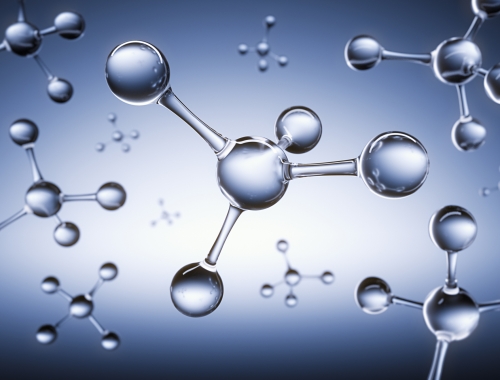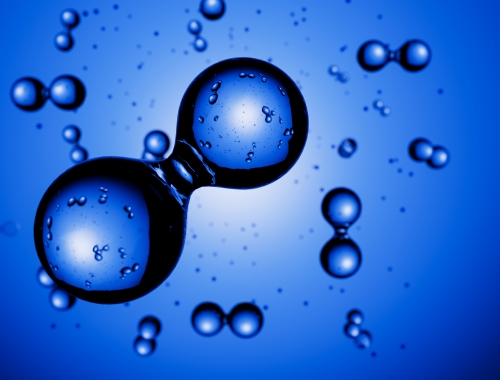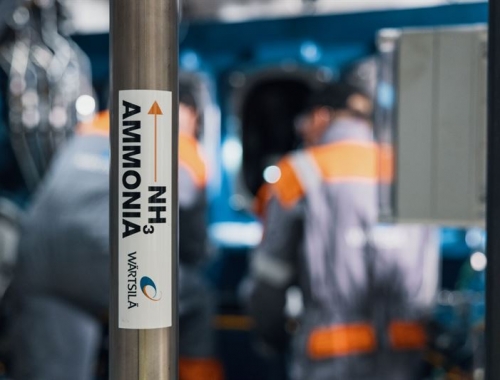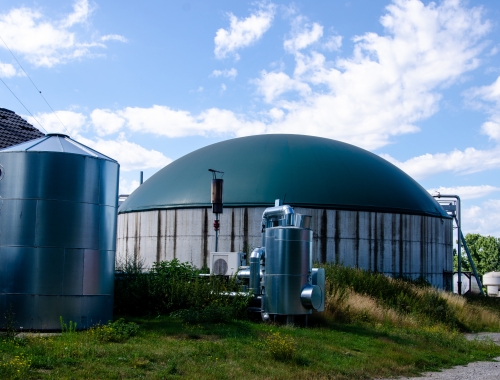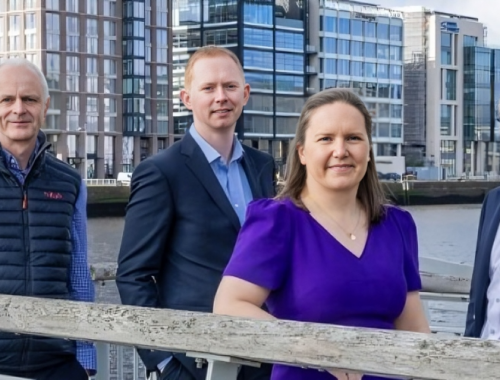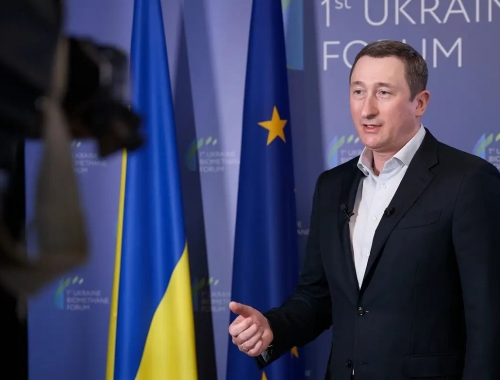C-Zero: the low-power solution for clean hydrogen from natural gas
SUMMARY
Zach Jones, CEO of C-Zero, discusses with Gas Pathways the company’s novel process for producing turquoise hydrogen from natural gas with virtually no CO2 production and a low electrical energy input.
By Mike WeberPOSTED IN:
Q: Briefly, can you tell us about what C-Zero offers for oil and gas companies looking to accelerate their transition to a low-carbon future?
C-Zero has developed a novel process which converts natural gas into hydrogen and solid carbon. The resulting “turquoise” hydrogen provides clean, low-cost energy on demand, while the solid carbon can be used in several beneficial applications or permanently sequestered. With virtually no CO2 production and low electrical energy input, the process can be sited anywhere that natural gas is available.

C-Zero CEO Zach Jones
Q: C-Zero is a relatively new company founded in 2018. Can you give us a short overview of your journey from being founded to where you are now?
C-Zero was founded in 2018 to commercialise the research of Dr. Eric McFarland at the University of California Santa Barbara (USCB). McFarland spent the previous two decades researching methane chemistry, and beginning in 2016, began looking at ways to produce hydrogen and solid carbon from natural gas with near-zero direct CO2 emissions. The company has raised $50mn to date from prominent investors Breakthrough Energy Ventures, Bill Gate’s clean energy fund; SK Gas, part of South Korea’s second-largest conglomerate, the SK Group; Italian oil major Eni, Mitsubishi Heavy Industries, one of the largest turbine manufacturers in the world; AP Ventures, a UK-based, hydrogen-focused venture capital fund; commodities trader Trafigura and Engie New Ventures, one of Europe’s largest utilities. The funding has supported the development and construction of C-Zero’s first pilot plant, which will be online later this year, and is expected to be fully commissioned in Q1 2024. C-Zero maintains a lean but growing team with over 25 employees and an expanding patent portfolio with more than 20 patent families.
Q: Let’s talk about your technology that uses thermocatalysis to extract the carbon in natural gas as a dense solid. Can you explain how the process works?
Methane pyrolysis is challenging because it requires significant quantities of high grade heat to be added to a molecule that has a high propensity for coking up heat transfer surfaces when cracked. When the heat transfer surface cokes up, the heat flux through them drops dramatically, and the reaction stops. The only commercial methane pyrolysis process in existence today uses a high temperature plasma to add the heat necessary to crack methane, which avoids this phenomena.
C-Zero is targeting markets without significant renewable electricity capacity factor, and for this reason has developed a process with low electrical energy, while still separating the heat addition and carbon formation sections of the reactor. Additionally, the process consumes a portion of the product hydrogen it produces, so that direct CO2 emissions are near zero, which the company hopes will enable qualification for the higher tiers of the 45V Hydrogen Production Tax Credit in the US, and similar incentives that are emerging globally.
Q: There are a number of attractive elements to utilising methane pyrolysis. A couple of these advantages are that the carbon can be extracted in solid form avoiding the need to sequester CO2 underground, and also that pyrolysis can utilise existing natural gas infrastructure. Just how big of an advantage are these factors?
The ability to produce solid carbon as a waste stream instead of CO2 has significantly lower sequestration energy costs and provides a high degree of flexibility for site locations. CCS projects that output CO2 streams are by definition constrained by access to an available CO2 pipeline connected to an end sequestration point, which dramatically impacts the feasibility of many proposed facilities. The ability to acquire right of ways to develop CO2 pipelines is a major challenge, as is the geological availability for sequestration in many regions.
The global availability of existing natural gas pipelines is a major boon for C-Zero’s technology, particularly versus electrolysis. The necessary energy source for the C-Zero process is natural gas, and the infrastructure is already in place to site a C-Zero facility at many industrial points of use that currently use natural gas. Unlike electrolysis, there is no need for additionality of renewable energy infrastructure to match its operational energy consumption to truly reduce emissions. This aspect remains largely debated and often vaguely explained but many argue that any renewables added solely for green hydrogen production instead of reducing fossil fuel generated electricity are still reducing emissions.
Q: Last summer you closed a $34mn financing round led by SK Gas to build a natural gas decarbonisation pilot project. How far along is the pilot project? And can you also tell us about your plans to develop your first commercial unit?
A: The company is currently building a pilot plant in Texas that will start up at the end of this year and be fully commissioned by the end of Q1 2024, and be capable of up to 400kg/day of H2 production. C-Zero has LoIs signed with utilities and industrial power producers that collectively have over 100 GW of electrical generation from natural gas, and are interested in deploying C-Zero’s technology at scale.
C-Zero plans to raise a Series B round in H2 2024 to support the development of the company's first commercial system, which is currently being designed at a production capacity of 5-6 mt of H2 / day. Engineering and design work has already commenced on the commercial unit with a target of completing site selection and initial permitting in H2 2024.
Q: A lot of your team has a strong background in building chemical plants. How has this helped with developing your thermocatalysis solution for producing turquoise hydrogen?
A: Our team combines a deep understanding of thermocatalysis with decades of experience in building some of the world's largest chemical plants. The company has a strong team with almost half of the 25 full time employees holding a PhD with a wealth of experience in the chemical and energy space. This level of experience is critical to successfully scaling ideas from the lab into industrial reality.
Q: Pyrolysis has enormous potential to decarbonise a wide range of the energy system, including power generation, heavy industrial heating, and the production of commodity hydrogen for fuel cells, synthesising ammonia or refining. Just how big could the market be?
A: Nearly 75% of worldwide greenhouse gas (GHG) emissions come from the transportation, electricity, and industrial sectors. Today, these industries rely heavily on natural gas to deliver reliable, on-demand energy, however copious amounts of CO2 are produced in parallel. Decarbonising these industries is essential to progressing the global energy transition.
C-Zero's process uses natural gas for both the process feedstock and the process energy, with low electricity consumption. This allows for the decarbonization of natural gas in geographies with low renewable electricity capacity factors, like Japan, Korea, and higher latitudes in Europe and North America. Based on these features, the overall addressable market is many billions of US dollars annually and growing alongside the demand for hydrogen globally.
Q: Looking ahead, what are C-Zero’s short and long-term goals and targets?
As of Q3 2023, C-Zero had signed several dozen LoIs with prospective customers. As a small company, C-Zero lacks the resources to engage with all these entities at an early stage, and is therefore offering select prospective customers the opportunity to collaborate with the company's technical and business teams via a feasibility study programme that will take place over the course of 2024.
The program is designed to determine whether C-Zero’s technology is a good fit for a participant’s hydrogen needs, and to uncover any synergies with downstream hydrogen consuming processes (ex. heat integration with a combined cycle turbine). At the end of the programme, participants who wish to continue to the front-end engineering and design (FEED) stage in 2025 will be given preferential access to the company’s technology on terms mutually agreed to by the participant and C-Zero.
C-Zero is targeting the late 2020s for several commercial scale facilities, with a target of commissioning a single process train running at the technology’s maximum efficient scale by 2023.


